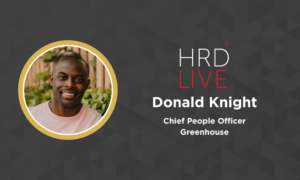How to improve employee diversity and inclusion in the workplace
- 11 Min Read
How can true employee diversity and inclusion be created in the workplace?
- Author: HRD Connect
- Date published: Jul 31, 2019
- Categories

Josh Bersin, an independent analyst and founder of Bersin by Deloitte, called employee diversity and employee inclusion one of the hottest topics of 2019.
Workplaces are becoming more multicultural. Employees are moving across countries and into positions in businesses all over the world. Increasing employee diversity has put pressure on organisations to create workplaces with greater levels of inclusion for employees from all walks of life.
These changes in demographics, the rise of multicultural workforces, and prevailing talent shortages are pushing employee diversity and inclusion to the forefront of the business agenda. Achieving real inclusion in the workplace has never been more important.
The growing importance placed on employee diversity and inclusion is also due to its increasingly well-documented relationship to business outcomes. Research shows the significance of employee diversity and inclusion for organisational effectiveness, and has consistently demonstrated that increased diversity and inclusion in the workplace leads to vastly improved overall performance, compared to companies with less diverse workforces.
How is greater employee diversity changing the workplace?
Diversity and inclusion in the workplace has been a focal point for human resources and employer branding strategies for quite some time now. There are numerous trends driving the increased attention on the employee diversity and employee inclusion conversation, such as the Five Diversity And Inclusion Trends We Can Expect In 2019 from Forbes. They have predicted that:
- More executives will feel compelled to apologise for a lack of diversity in their companies, as they figure out how to build an environment that is inclusive and equitable for both employees and customers.
- There will likely be more sexual harassment and prevention training implemented into workplaces in the wake of #MeToo.
- We will see more diverse representation at every level of business, including diverse leadership teams.
- Companies will focus more on inclusive marketing and advertising, as well as the creation of more inclusive products.
- More celebrities and public figures will speak out against discrimination and exclusion, calling for more accountability when it comes to diversity and inclusion.
In the journey toward building greater diversity and inclusion in the workplace, it’s important to consider the relationship between what’s happening inside and outside your company.
In a conscious effort to build greater employee inclusion, leadership teams across organisations have made it a solid goal to raise the employee diversity of their workforces by filling the leadership pipeline with talented women and members of other underrepresented groups, and promoting them into executive leadership positions. Alternatively, some organisations are simply focused on diverse hiring.
What other measures can organisations take to boost diversity and inclusion in the workplace?
Here are a few key points:
Policies to support employee diversity and employee inclusion
According to a survey by Deloitte, 38% of executives report that the primary sponsor of an organisation’s diversity and inclusion efforts is the CEO—just 12% of companies have reached the most “mature level” of inclusion, in the consulting firm’s model.
Employee diversity and inclusion in the workplace can be more effective if employees from underrepresented backgrounds are supported by managers and workers. Employees, both current and potential, consider their organisation to be successful in improving diversity and inclusion in the workplace based on practices that aren’t directly related to diversity, such as a focus on innovation and creativity.
Employee diversity and inclusion must be included in a company’s mission, strategies, and practices to support diversity and inclusion in the workplace and leverage its effects to achieve a competitive business advantage.
Hence, employee diversity and inclusion must be a top-to-bottom business strategy – not simply an HR initiative.
Quotas don’t systematize employee diversity and inclusion
Hiring goals may push employee inclusion and diversity numbers, but this won’t bring about an inclusive culture on its own. Often, organisations focus employee diversity and inclusion efforts excessively on the employee pipeline, but the employee experience continues far beyond an offer letter. To retain and nurture top talent, it’s critical to take an honest look at the end-to-end employee experience, with an eye toward creating conditions that promote employee inclusion and nurture employee diversity daily, while designing ways to measure the impact.
Organisations must understand that the emphasis on employee experience changes everything – from sourcing and recruiting to hiring and onboarding, to the daily aspects of work, such as team building, culture, performance reviews, succession planning and mentoring.
Organisations must adapt their processes to scale inclusive behaviours. This means keeping track of who is invited to meetings, who gets to speak and how often the organisation is leaving out anyone whose input would be valuable.
Organisations must look at everything to ensure they are creating conditions where every person can contribute in own their unique and meaningful way, and feel safe and secure doing so. If organisations find parts of their business where that is not the case, they must collectively own up to it and make the right changes.
Employee diversity and inclusion technology
Employee diversity and inclusion technology is enterprise software that provides insights or alters processes or practices, at the individual or organisational level, in support of organisations’ efforts towards introducing and enhancing diversity and inclusion in the workplace.
The most obvious potential benefit of diversity and inclusion technology is the opportunity to create consistent, scalable practices that can identify or mitigate biases across organisations, often in real-time. This is the fundamental rationale behind having diversity and inclusion in the workplace.
Employee diversity and inclusion technology is targeted at either candidates or employees. Additionally, there is employee diversity and inclusion analytics software that is used for monitoring, including pay equity analysis, employee resource group (ERG) management and analysis, and employee diversity and inclusion business case analysis.
You can find out more about employee diversity and inclusion technology by reading Diversity & Inclusion Technology: The Rise of a Transformative Market, a report by Stacia Sherman Garr, RedThread Research, in partnership with Carole Jackson, Mercer.
As per McKinsey & Company’s latest report on racial diversity and company financial performance, executive teams ranking in the top 25% for racial and ethnic diversity were 33% more likely to reap financial returns above the national median for their industries.
Diversity and inclusion in the workplace throughout the employee lifecycle
Impactful employee diversity and inclusion will be a result of spreading the effort throughout the employee lifecycle.
Here are ways of embedding diversity and inclusion in the workplace at each stage of the employee lifecycle:
Attraction
By communicating the attractiveness of the workplace, a company increases its exposure to the environment as an employer of choice. Employee diversity and inclusion branding has become ‘mainstream’, and a focus on diversity and inclusion in the workplace is particularly useful in attracting talent.
Also, altering all job descriptions to gender-neutral lingo shows commitment to building employee diversity and an inclusive culture. One simple sentence, thoughtfully worded, can send a strong message to potential applicants.
Recruitment
According to a Glassdoor survey, two-thirds of job applicants consider diversity to be an important factor in deciding where they want to work.
Studies have shown that people with stereotypically ‘ethnic’ names need to send out more resumes before they get a call back, and that resumes with female names are rated lower than ones with male names, when the resumes themselves are equal. By cutting this trend, diversity and inclusion in the workplace can be brought about by performing blind screenings to abate oblivious biases in the resume review process.
Another thing that consciously needs to be implemented is banning ‘culture fit’ as a reason for rejecting a candidate. When interviewers want to reject candidates for ‘culture fit’ or based on a ‘gut feeling’, it’s an indication that diversity and inclusion in the workplace doesn’t exist.
Culture fit can be dangerous, because it can be exclusive. Organisations have to first be able to identify and bring to life the organisation’s values, mission and purpose, and define its ‘culture fit’ so that it allows for greater diversity, and creates opportunities for building inclusion in the workplace.
Development
When hiring, it is important for organisations to focus on keeping employee diversity and inclusion in mind, however, organisations also need to help their employees grow. The talent development phase must be utilized for the advancement of employees, and should be closely linked to an organisation’s attitude to diversity and inclusion.
Learning should be an integral component in bringing diversity and inclusion into the workplace. Organisations can push employee diversity and inclusion through the following activities:
- Introducing employee diversity and inclusion as a priority early in the employee’s cycle.
- Enabling diverse talent to search for mentors.
- Enabling diverse talent to organically find mentors via networking.
- Offering personalized ‘career pathing’.
- Flagging and avoiding bias in performance feedback language.
- Providing structure to performance feedback.
- Identifying hidden high-potential employees.
- Enabling trainings, conferences, events, and conversations for leaders
- Providing insights on leaders’ behaviours.
According to Quantopian, a research platform based on crowdsourced algorithms, women-led companies reap three times the returns of Standard & Poor 500 enterprises run predominantly by men.
Engagement and Retention
For placing importance on diversity and inclusion in the workplace, it is essential to consider how people perceive their organisation, specifically their unique experience as an employee. This might include how they are spoken to and how they feel they can communicate with their organisation. For this phase, organisations should consider undertaking the following activities to make sure employee diversity and employee inclusion is maintained:
- Planning for and understanding diverse groups’ work experiences.
- Openly communicating aspirations towards diversity and inclusion in the workplace.
- Asking questions to better understand employee inclusion.
- Include employee diversity and inclusion in performance conversations.
- Analyzing communications for impact on culture.
- Creating a channel for employee diversity and employee inclusion in via a communication tool.
- Enabling anonymous reporting.
- Aiding innovation and feedback loops while minimizing bias.
- Celebrating holidays and events for underrepresented minorities like Black History Month or Gay Pride Week.
- Establishing a mother’s room where nursing women have a private space for pumping breast milk.
- Inviting a guest speaker from the employee diversity and inclusion community.
Separation
When a team member leaves, it can in turn affect other members of their team. To maintain diversity and inclusion in the workplace, it is important that the employee who is exiting does so in a way that doesn’t disrupt the company.
Here are four great ideas you could adopt if you are faced with a key employee leaving your organisation unexpectedly:
- Dig deep into the reasons behind the resignation.
- Remember the saying, ‘One door closes and another opens’.
- Ask for honest feedback.
Boost delight and build connection
Employees are bound to respond with fear and cynicism when their beliefs are challenged. Fear encourages people to narrow their perspective, which is undesirable when trying to create a more inclusive workplace. Finding ways to imbue challenges with opportunities and possibilities — and promoting shared experiences and storytelling in doing so — creates greater potential for positive change.
Organisations should focus on creating moments that instil a feeling of momentum. Pointing out where there’s room for improvement needs to be coupled with spotlighting moments of success and celebrating them. For example, some organisations create a commitment tree, where every employee writes down their personal, individual commitment to employee diversity and inclusion, which is placed in a very public area so that every employee can see signs of their progress and celebrate them on the journey to creating diversity and inclusion in the workplace.
Diversity and inclusion in the workplace can often eliminate many of the obstacles that lead underrepresented groups to change companies or leave the workforce altogether. According to one study, organisations with strong employee diversity and inclusion have higher rates of employee retention and find it easier to recruit new employees than those without. Companies with more diversity and inclusion in the workplace have a 22% lower turnover than those without.
Organisations need to make clear that employee diversity and inclusion are priorities, and not just extracurricular. They need to live and breathe employee diversity and inclusion, and show it to their employees in all their actions.
What is your organisation doing for diversity and inclusion in the workplace?









